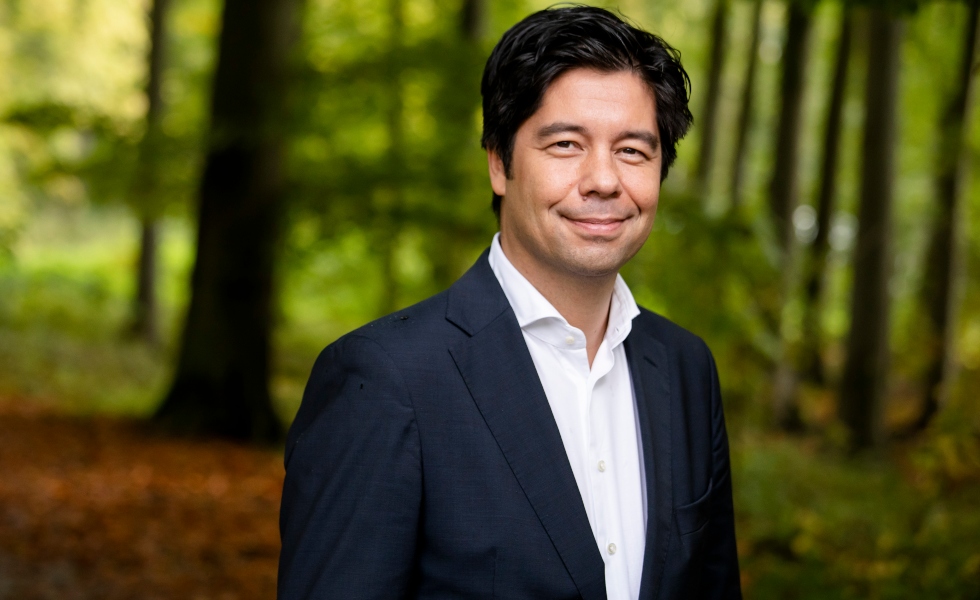San Lie: Don't view nature as a risk, but as an opportunity!
San Lie: Don't view nature as a risk, but as an opportunity!

This column was originally written in Dutch. This is an English translation.
By San Lie, Director of ASN Impact Investors
Our economy, no matter how highly developed, is highly dependent on nature. This was also evident from a risk analysis by DNB (the Dutch central bank) this month. Because if the loss of nature costs money, how logical is it to invest in the preservation and growth of nature, i.e. in biodiversity?
DNB is a relatively large investor with its portfolio of €8 billion. Just over half of this portfolio consists of bonds of countries and government-related institutions, the rest is invested in corporate bonds and shares. The central bank recently examined part of its share portfolio for nature-related financial risks.
Zooming in on the electricity sector
That research is interesting to read, because it shows how to approach such an exercise and because it once again brings you face to face with the facts: we cannot do without nature. DNB decided to focus on the electricity sector. This is because, on the one hand, power stations are highly dependent on nature, for example because they use clean water for cooling, but on the other hand they also have a significant impact on nature through their emissions and the discharge of cooling water.
The risks of this dependence and impact on nature are obvious: if drought causes a shortage of water, this threatens business operations. But rules regarding emissions and nature impact can also have financial consequences for an electricity company. Methods already exist to translate such risks into the financial world. DNB used a step-by-step plan from the Taskforce on Nature-related Financial Disclosures (TNFD).
Hydropower is just as harmful as fossil fuels
I would like to refer to DNB itself for all the lessons from the research, but I do not want to withhold this from you: the location of a power plant (near water, near a nature reserve) appears to have a major influence on nature-related risks. More surprisingly: a hydroelectric power plant is about as harmful to the natural environment as a fossil one, despite the much lower CO2 footprint. This is also reflected in the conclusions: an improvement in the field of climate does not necessarily translate into lower financial risks related to nature.
Another interesting conclusion from DNB is that the bank will talk to the asset managers behind its portfolio. How do they calculate and manage the financial risks surrounding biodiversity as identified in the research? As asset managers, we can indeed be held accountable for this.
Example for pension funds
For DNB, the exercise was an exploratory study, intended to serve as an example for pension funds, insurers and other financial institutions. It made me excited, for several reasons. I wholeheartedly welcome any research that translates the importance of nature and ecosystem services, such as clean water in this example, into relevant insights for investors.
This time, DNB looked at nature from the risks that the loss of nature can pose and the risks that regulations surrounding nature can pose for its portfolio. Paying attention to those risks is already a step. One that leads to the insight that you will have to make different choices in your portfolio to limit the risk of damage or losses.
Investing in balance with nature
But I also see the next, even more important step coming closer. In addition to limiting natural risks, you can also invest in companies and strategies that work in balance with nature and biodiversity. In doing so, you simply avoid those risks and perhaps reduce them for other activities in your portfolio. More and more opportunities are emerging worldwide to invest from this different focus. In companies and funds that have anchored the restoration and protection of nature at the core of their business model. It is a world that DNB, like other financial parties, does not yet know very well, but that is where you will find the real risk reducers.
And then it is good to see that large investors such as pension funds, which have had biodiversity on the board agenda for some time, are ready for that important next step and want to give biodiversity a strategic place in their policy. Not just because of the flowers and the bees, nor just because of limiting the risks, but based on a thorough analysis that shows how indispensable the services that nature provides to our society and economy are and how you can use them strategically.
San Lie is Director of ASN Impact Investors. The information in this column is not intended as professional investment advice or as a recommendation to make certain investments.










